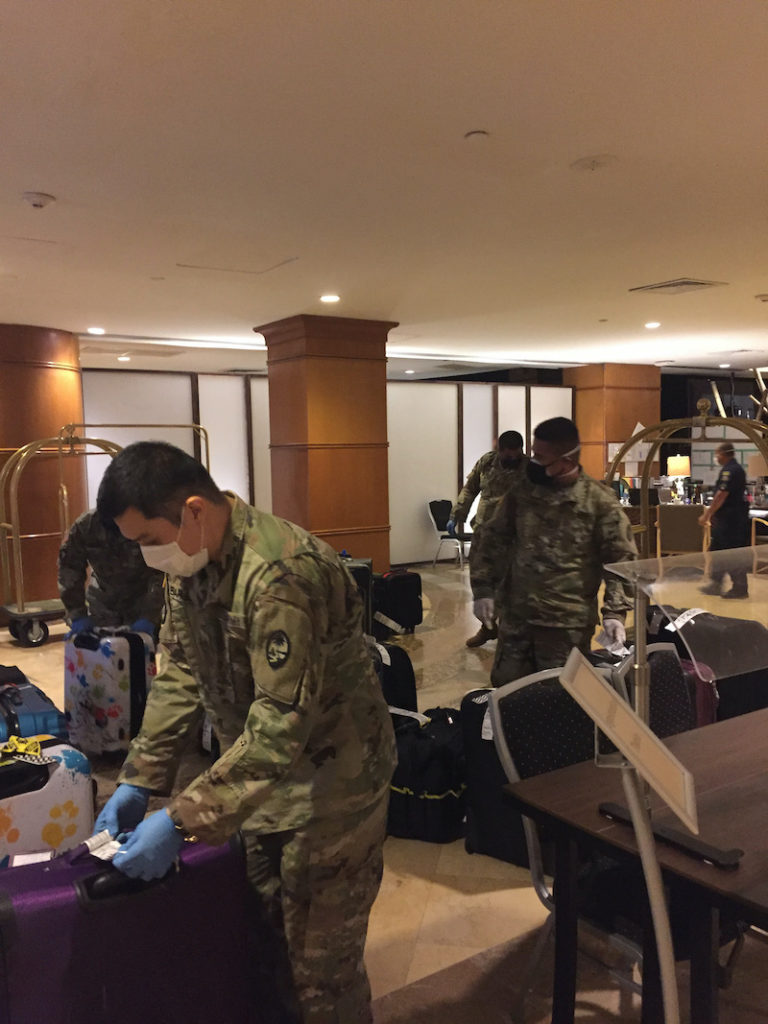Being stuck outside of Japan is no fun. With only occasional visits to the U.S. and other countries, I had lived in Tokyo continuously since October of 2010. But now, I was unable to re-enter Japan.
Los Angeles
I had arrived in Los Angeles, California on March 1, 2020. Because my residence card had expired on June 28, 2020 (while I was in the U.S.) my return to Japan was made exponentially more difficult. Although Japanese Immigration would soon bar entry to Japan from many countries including the U.S., the main reason I could not return was that my residence card had expired.
Why had I let my card expire? Well, based on my reading of the information published by Japanese Immigration, I thought I had a three-month extension. But, as discovered by Mr. Nakano (the Chief Director of WAASA), the three-month extension was granted only for those residents already in Japan! (This was to prevent over-crowding at the Immigration Bureau.)
An appeal to the Japanese Consulate in Los Angeles was to no avail. They said they could not do anything because my card had expired. Calls to Japanese Immigration itself bore no fruit.
Hawaii
Because there was said to be a strong possibility, however, that Japan would soon allow visitors from Hawaii, I decided to go there.

I arrived on September 1, and self-quarantined for two weeks. I consulted with the Japanese Consulate in Honolulu, but it seemed that there was still little possibility of returning to Japan. Tourists could definitely not enter Japan, and unless there were special circumstances, even foreign residents were barred.

At this point, I explained my predicament to Mr. Nakano. He visited Immigration and the Japanese Ministry of Foreign Affairs, and, after speaking to an upper-level official, was able to determine a course of action that could lead to a way back into Japan.
Here is the procedure I had to follow.
immigration_no_guarantor_case-1Note that the procedure may now be obsolete. Also note that it is written in Japanese. I don’t recall whether or not there was an English version of the document.
The most important component of my application for a visa was the moushitate-sho (申立書), a personal statement explaining my situation and my current need to return to Japan. I wrote the initial draft in Japanese, and submitted that to the consulate in Honolulu for review. They asked for more detail, and so, together with Mr. Nakano, I refined the document. The consulate accepted my moushitate-sho, and submitted it to the Japanese Ministry of Foreign Affairs. After two weeks, I was granted a visa.
I believe that it was very important that the moushitate-sho be written in Japanese. Although apparently the Japanese Consulate in Honolulu would have translated an English-language moushitate-sho into Japanese, I doubt that the quality of such a translation would be as good as what Mr. Nakano and I were able to write. Being able to communicate in native Japanese is a way to “make things happen.”
Guam
There were no direct flights from Honolulu to Tokyo, and most of the flights flew back to the U.S. mainland, and then crossed over to Tokyo. I felt that was wasteful, so I chose a flight that took me to Narita via Guam. There was a one-night layover in strict quarantine. The quarantine was well-managed by the Guam contingent of the U.S. Army and the National Guard.

Tokyo, Japan
I arrived in Japan on Oct 16, and was interviewed by Japanese Immigration officials. This was nerve-wracking because it seemed possible that I would be barred from entry. They explained that they needed to understand the reason for the approval of my re-entry, but unfortunately, because it was a Saturday, the Foreign Ministry official who had handled my case was not at work, and could not access the Foreign Ministry computer system remotely. (The details of my case were actually more nuanced than what I’ve described.)
On my computer, I displayed the moushitate-sho which Mr. Nakano and I had written. This provided the immigration officials at Narita with a lot of clarification. I showed them the WAASA website, which clearly listed me as a director. I showed them the website of the Japanese company for which I did consulting. After seeing all of this, they were confident that I had a legitimate need to be back in Japan, and was given, on the spot, a new residence card (with Long Term Resident status!) with a one-year period of validity, which would give me enough time to re-apply for a longer term period of validity.
I quarantined in a Narita hotel for two weeks, and was finally free to take public transportation to go home on Oct 31, Halloween.

In hindsight, the key factor was the moushitate-sho, which I could not have written in Japanese to the same level of clarity without the help of WAASA’s Mr. Nakano.
